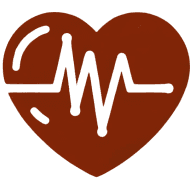How Do You Maintain Clear Communication With Patients as a Cardiologist?
Communication with patients who have complex cardiac conditions can often feel like navigating through an intricate labyrinth. Just as a skilled navigator plots out each turn with precision and awareness, healthcare professionals employ unique techniques to maintain clear communication. Esteemed experts like a Consultant Cardiologist leverage methods such as "Chunking and Summarizing" to pave the way for understanding. With six key insights in this article, readers will gain a comprehensive grasp of best practices straight from the hearts of dedicated professionals.
- Use Chunking and Summarizing
- Prioritize Active Listening and Empathy
- Simplify Language, Avoid Medical Jargon
- Integrate Visual Aids in Consultations
- Encourage Patient Questions and Participation
- Provide Personalized Treatment Plans
Use Chunking and Summarizing
One of the techniques I use to maintain clear communication with patients who have complex cardiac conditions is "chunking and summarizing." I personally never try to explain everything at once because the patient can get overwhelmed by technical language and too much information, especially when they are already dealing with something as emotionally and physically taxing as a heart condition.
So, I try to break the information down into smaller bits and parts. For example, when explaining the patient's condition, I will first start with the basics, that is, explaining what is happening to their heart. Then I stop to check in with them, asking if everything is clear, and then move forward with more details once I am sure they have grasped what I have explained so far. Only after they understand that information do I move onto the next part, which is explaining the treatment options and lifestyle changes.
After explaining everything, I circle back at the end and summarize everything we have discussed in plain and simple language. By doing this, I ensure they have understood everything and make sure they have grasped the key points without too much information that might confuse them.
Sometimes, I will compare the condition to something they might understand in their everyday life. For example, I might explain that a blocked artery is like a clogged drain. Here it is relatable and it also helps the patient to understand it. The way I communicate with my patients and how well I can explain their condition and how well they understand it makes a huge difference in how they approach managing their condition.

Prioritize Active Listening and Empathy
Maintaining clear communication with patients as a cardiologist involves prioritizing active listening and empathy during interactions. Understanding the emotions and concerns of patients is crucial to building trust and ensuring they feel heard. When patients feel valued and respected, they are more likely to share important details about their health.
This open exchange of information helps in delivering more accurate diagnoses and effective treatments. Encouraging empathy in every patient interaction fosters a supportive environment. So, make efforts to listen actively and show empathy in your practice.
Simplify Language, Avoid Medical Jargon
Utilizing clear, concise language without resorting to medical jargon aids in effective communication with patients. Medical terms can often confuse patients, hindering their understanding of their health conditions. Simplifying complex concepts into easily understood words makes it easier for patients to grasp information about their health.
This approach not only educates but also empowers patients to take control of their health decisions. By avoiding jargon, clearer communication is facilitated, enhancing overall patient care. Make it a habit to speak plainly and clearly with your patients.
Integrate Visual Aids in Consultations
Using visual aids is a powerful method to explain intricate medical concepts to patients in cardiology. Visual aids such as diagrams, charts, and images can simplify complex information, making it more digestible for patients. These tools can visually represent the condition of the heart, treatments, and procedures, providing patients with a clear understanding of their health status.
Visual aids can bridge the gap between medical knowledge and patient comprehension. This helps patients feel more informed and less overwhelmed. Start integrating visual aids into your consultations for better patient understanding.
Encourage Patient Questions and Participation
Encouraging patients to ask questions and actively participate in their care is essential for clear communication in cardiology. This proactive approach ensures that patients feel involved and responsible for their health outcomes. When patients are encouraged to voice their concerns and doubts, it leads to a more collaborative doctor-patient relationship.
This engagement helps in identifying areas of misunderstanding and rectifying them promptly. Recognizing the patient's role in the communication process enhances the overall quality of care. Foster a culture where questions are welcomed and participation is encouraged.
Provide Personalized Treatment Plans
Providing personalized treatment plans with clear explanations is integral to maintaining clear communication with patients. Each patient has unique needs and circumstances that must be addressed individually. By tailoring treatment plans and explaining each step clearly, patients can better understand their health journey.
This personalized attention makes them feel valued and cared for, fostering a strong therapeutic relationship. Clear explanations reduce anxiety and confusion, promoting adherence to treatment regimens. Take the time to create and explain individualized treatment plans for each patient to improve communication and care outcomes.

